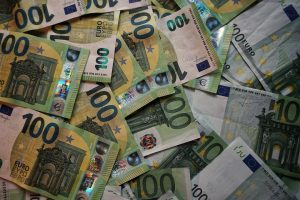Volume is a term used in financial markets, which refers to the total number of shares or contracts traded during a particular period. In the forex market, volume refers to the amount of currency traded during a specific period. It is an essential aspect of forex trading as it provides valuable information about market activity, price trends, and potential trade opportunities.
Forex volume is typically measured in lots, which represents the minimum amount of currency that can be traded. One standard lot in the forex market is equivalent to 100,000 units of the base currency. However, traders can also trade in mini-lots (10,000 units) or micro-lots (1,000 units) depending on their trading capital and risk appetite.
Understanding forex volume
Forex volume is an essential metric that traders use to analyze market trends and make informed trading decisions. It provides valuable insights into market activity, such as the number of buyers and sellers, the intensity of trading, and the potential price movements. High volume usually indicates a strong price trend, while low volume can suggest a lack of market interest or a potential reversal.
In the forex market, volume is not centralized like in the stock market. Instead, it is decentralized, meaning that it is the sum of all trades that occur between buyers and sellers across various trading platforms and brokers. As a result, it can be challenging to obtain accurate volume data in forex trading.
The most common way to measure forex volume is through the use of tick volume. Tick volume represents the total number of price changes or ticks in a currency pair during a particular period. Although tick volume is not a precise measure of forex volume, it provides a good estimate of market activity and can be used as a proxy for volume analysis.
Forex volume indicators
To help traders analyze forex volume, several volume indicators have been developed. These indicators use various formulas to calculate the volume of trades and present the data in a user-friendly format. Some of the most popular forex volume indicators include:
1. On-balance volume (OBV)
On-balance volume is a popular volume indicator that uses a cumulative total of positive and negative price movements to determine market trends. It calculates the volume based on the closing price of a currency pair and adds or subtracts the volume depending on whether the price trend is positive or negative. OBV is a useful tool for identifying potential trend reversals and confirming price movements.
2. Volume rate of change (VROC)
Volume rate of change is an oscillator that measures the rate of change of forex volume over a particular period. It compares the current volume to the volume of a previous period and calculates the percentage change. VROC is a useful tool for identifying potential trend changes and confirming price movements.
3. Chaikin money flow (CMF)
Chaikin money flow is a volume indicator that measures the flow of money into or out of a currency pair. It calculates the volume based on the closing price, the high-low range, and the volume of trades. CMF is a useful tool for identifying potential trend changes and confirming price movements.
Conclusion
Forex volume is a critical aspect of forex trading that provides valuable insights into market activity, price trends, and potential trade opportunities. Although it can be challenging to obtain accurate volume data in forex trading, several volume indicators can help traders analyze volume and make informed trading decisions. By understanding forex volume and using volume indicators, traders can improve their trading strategies and increase their profitability in the forex market.





